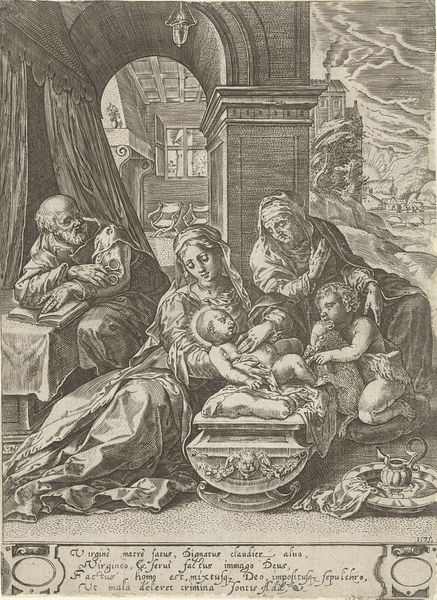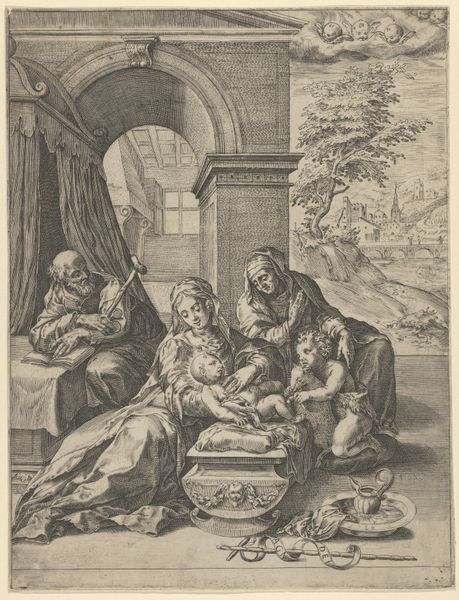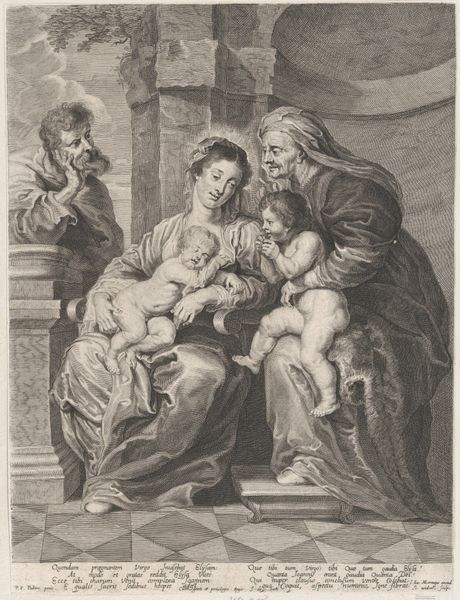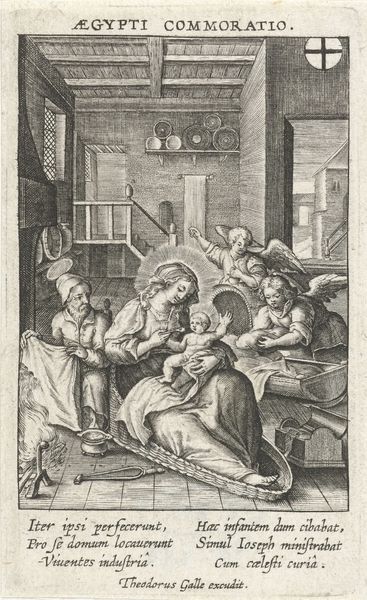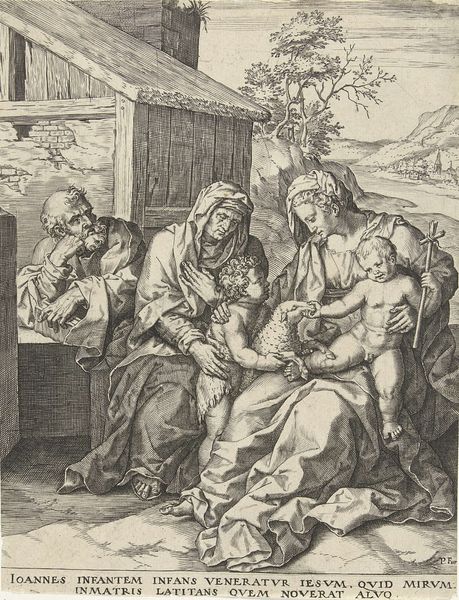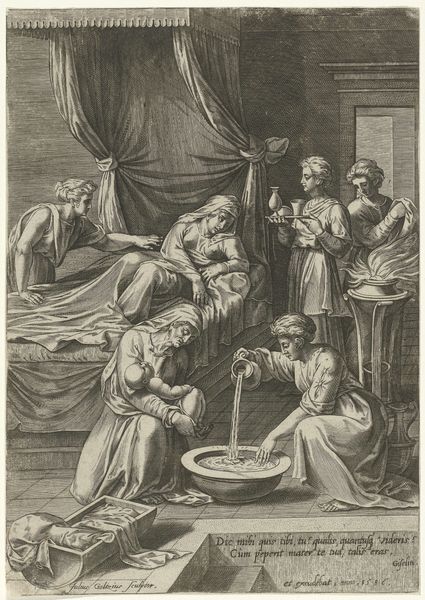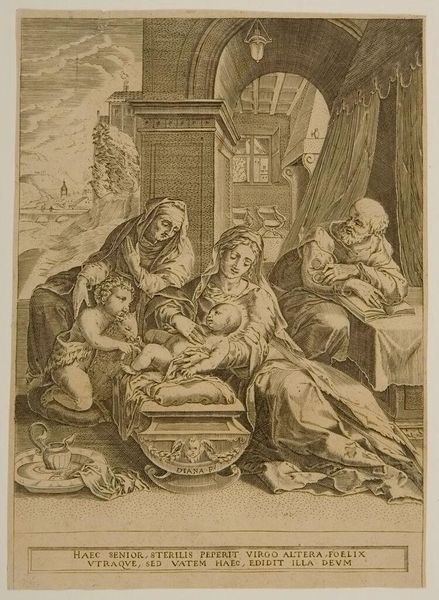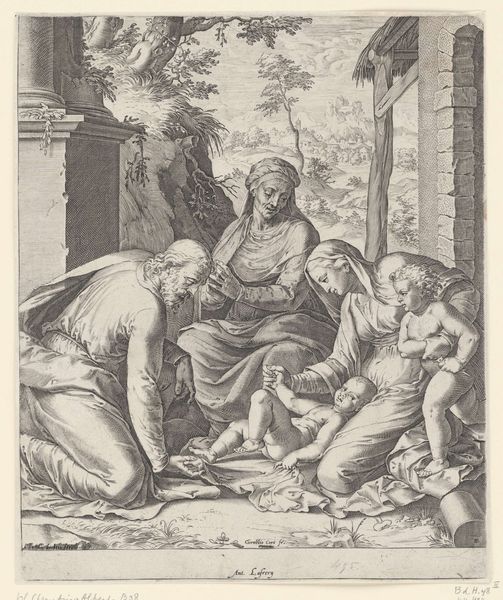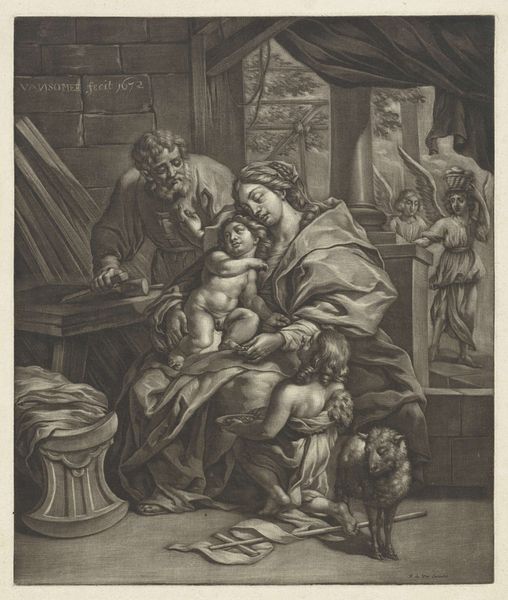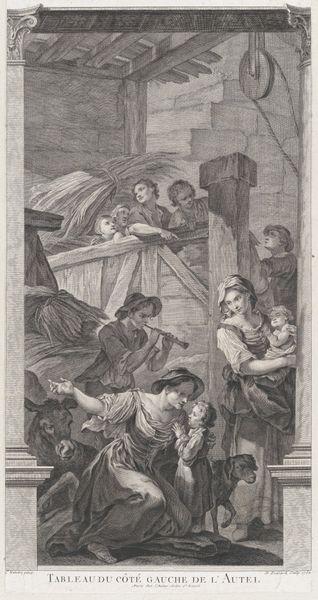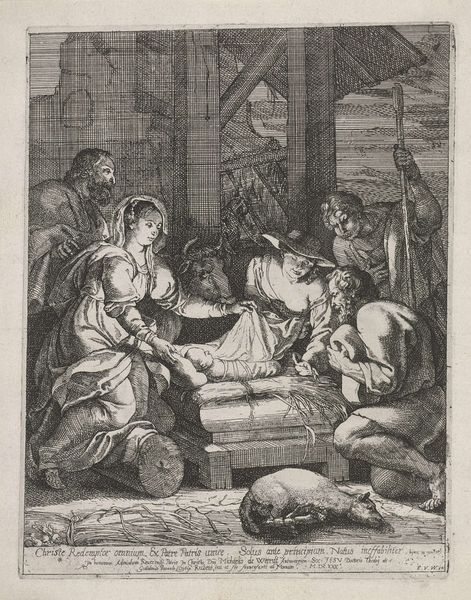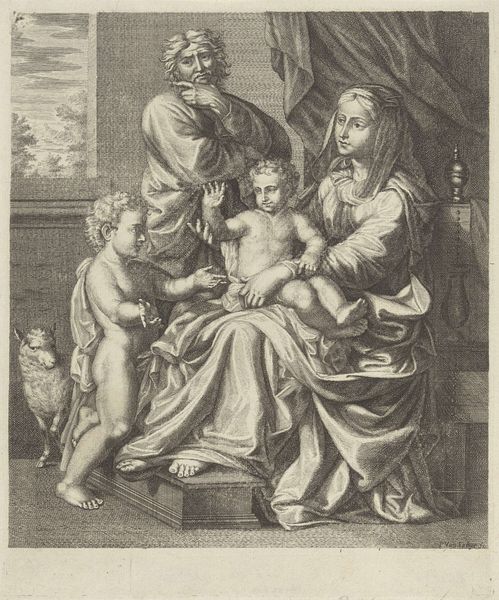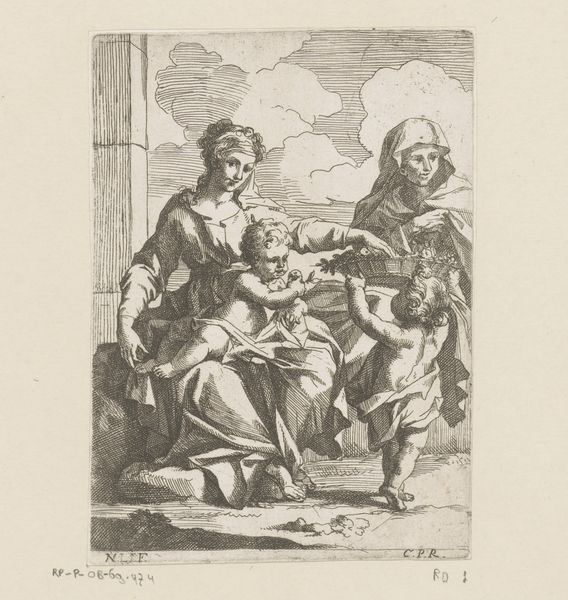
print, engraving
baroque
figuration
line
history-painting
engraving
Dimensions: height 290 mm, width 193 mm
Copyright: Rijks Museum: Open Domain
Curator: This engraving, executed by Cornelis Cort in 1602, depicts the Holy Family with Anna and John the Baptist. It’s held here at the Rijksmuseum. What are your immediate thoughts? Editor: Well, the light is really concentrated around the Christ child, nestled securely in Mary’s lap. There's a deep tenderness radiating from the figures surrounding him—almost a palpable sense of quiet anticipation and reverence. The line work is extraordinary too. Curator: Absolutely. Cort was known for his skill with line engraving, adapting the Italian style for a northern European audience. Prints like this were vital in disseminating artistic ideas, allowing artists far from Rome to engage with High Renaissance and early Baroque ideals. We should note this print dates back to when it was published, revealing itself to the cultural environment it was born into! Editor: Indeed. The inclusion of both Anna and John adds another layer. Anna represents the lineage and promise of the Messiah, while John, even as a child, foreshadows the future. It's the iconographic emphasis on divine inheritance and preparation that I find really compelling. Plus that playful cherub nearby alludes to the promise of salvation! Curator: And to bring up an institutional angle, consider that prints like this provided wider access to religious imagery. Paintings remained the privilege of the wealthy, yet an engraving could spread these scenes, thus increasing devotion to the divine. Editor: I also find the setting compelling. The detailed rendering of both the interior and exterior – that villa on the hilltop – makes it feel like we’re glimpsing an intimate, private moment within a grander historical narrative. Curator: It reminds us, of course, that while this is a scene steeped in religious significance, it is also inherently human. A mother with her child, grandparents looking on, friends and family gathered. Editor: A powerful reminder that the symbolic is always grounded in human experience, especially as religious reformers are looking at personal spiritual experience as primary, pushing against institutional frameworks. It adds even further to its lasting appeal for many centuries after! Curator: Ultimately, I think this print offers insight into how religious narratives were visualized and disseminated in early modern Europe and the intersection of social and religious themes. Editor: Yes, it really illuminates how core beliefs were conveyed through visual language and how this image continues to emotionally resonate to this day.
Comments
No comments
Be the first to comment and join the conversation on the ultimate creative platform.
